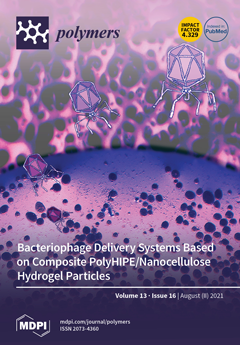A study was carried out on the possibility of orderly and spontaneous dimerization at room temperature of C
60 cages in fullerene liquid crystal fullerene dyads (R-C
60). For this purpose, dyads with a structural elements feature supporting π-stacking and Van der
[...] Read more.
A study was carried out on the possibility of orderly and spontaneous dimerization at room temperature of C
60 cages in fullerene liquid crystal fullerene dyads (R-C
60). For this purpose, dyads with a structural elements feature supporting π-stacking and Van der Waals interactions were tested, due to the presence of terthiophene donors linked through an α-position or dodecyloxy chains. In addition, this possibility was also tested and compared to dyads with shorter substituents and the pristine C
60. Research has shown that only in dyads with the features of liquid crystals, π-dimerization of C
60 units occurs, which was verified by electrochemical and spectroelectrochemical (ESR) measurements. Cyclic voltammetry and differential voltammetry studies reveal π-dimerization in liquid crystal dyad solution even without the possibility of previous polymerization (cathodic or anodic) under conditions in the absence of irradiation and without the availability of reaction initiators, and even with the use of preliminary homogenization. These dyads undergo six sequential, one-electron reductions of π-dimer (R-C
60···C
60-R), where two electrons are added successively to each of the two fullerene cages and first form two radical anion system (R-C
60)
•−(R-C
60)
•− without pairing with the characteristics of two doublets. Similarly, the second reductions of π-dimer occur at potentials that are close to the reduction potential for the conversion to a system of two triplet dianions (R-C
60)
2−(R-C
60)
2−. Electron paramagnetic resonance spectra indicate a significant interaction between C
60 cages. Interestingly, the strength of intermolecular bonds is so significant that it can overcome Coulombic repulsion, even with such highly charged particles as dianions and trianions. Such behavior has been revealed and studied so far only in covalently bonded C
60 dimers.
Full article






